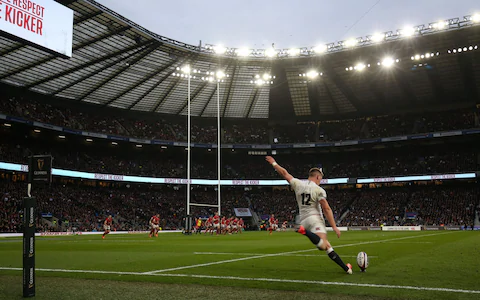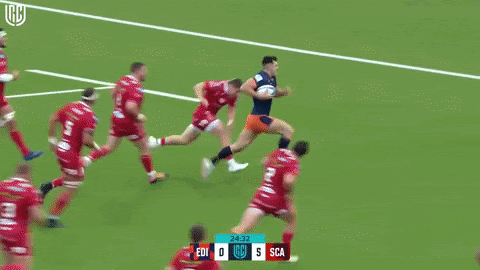In rugby, there are a lot of confusing terms that often catch people out. A try is one of those phrases, with not a lot of people knowing where the term comes from.
Why is it called a try in Rugby? The term “try” comes from the phrase “try at goal”. This is because the grounding of the ball over the try line gives the attacking team a try at the posts. The reason why grounding the ball over the try line is called a try is because originally this only gave the attacking team a chance to score with a kick at goal. Grounding the ball over the try line originally did not give the attacking team any points.

When the attacking team grounds the ball over the try line, they get an attempt to kick the ball between the posts to add an extra two points. Commonly known as a “conversion” it is also known as a “try at goal”. The reason why grounding the ball over the try line is called a try is because originally this only gave the attacking team a chance to score with a kick at goal.
Did a try used to be 4 points?
The amount of points awarded for a try has varied a lot over the history of Rugby. Initially, there were actually no points awarded for a try. For the first four years of rugby outlined by the RFU, a try did not even give a team any chance of scoring.
From 1876-1885 there was still no score awarded for scoring a try. Instead, if you scored a try you were given an attempt to kick the ball between the posts and this would give the kicking team one point. 1886 was the first time that a point was given for a try, with the attacking teams being given a point for a try and two points if they successfully kicked the conversion.
In 1891, both the try and conversion were increased in value. A try became worth two points and a conversion became worth three points. Three years later, the scoring swapped and the try became more valuable than the conversion. This is the scoring system that stuck for many years, not changing until 1971.

In 1971, a try became worth four points for the first time. The conversion stayed as two points and that is still the case today. In 1992, the try became worth five points. This is still the case today even with rugby going professional since the scoring changes in 1992.
How do you score a try in rugby?
Scoring a try is the goal of every rugby team. It is the primary way that teams score points and it is what every team is trying to do. A try is scored when the attack player grounds the ball on or past the try line of the opposition.
The player scoring the try needs to be in control of the ball. While it seems simple, there are quite a few rules about how you score a try. One of those is that the player scoring the try cannot be in touch when they score the try even when the ball is still in play. If the ball is touching the out-of-bounds line when it is grounded then it counts as being out.
There are two ways that a player can ground the ball to score a try. The first is touching the ball onto the ground in goal if they are holding the ball in their hands or arms. If the ball is on the ground in goal, downward pressure is needed to score a try. You need to put downward pressure on the ball using either your hands, arms or upper body. Your legs cannot be used to score a try.

There are also specific rules on scoring a try and the goalposts. In the past, the pads around the goal posts were considered part of the try line so if you grounded the ball against the base of the post it would count as a try. This is no longer the case, with the goalposts now not part of the try line.
You can still attempt to score a try if you are tackled short of the try line. If a player is tackled short of the try line they are allowed to reach out to attempt to ground the ball on or past the try line. They are not allowed to move with their torso or legs once on the floor but are allowed to reach out to place the ball with their arms.
What is a penalty try?
At the end of a rugby game, you can sometimes see penalties in the try scorer column. This means that a penalty try has been awarded. A penalty try is a referee giving the attacking team seven points for the try even if they have not grounded the ball across the try line.
Referees will do this when they feel the defensive team has committed an infringement that has directly stopped the attacking team from scoring the try. There are a few different infringements that are most commonly the causes of a penalty try.
Collapsing a maul is definitely the most common infringement that leads to a penalty try. If the defending team illegally brings down the maul short of the try line then a penalty is awarded. If the referee believes that this maul would have gone over the try line and given the attacking team a try if it was not collapsed they can award a penalty try.
An intentional knock-on is also given as a penalty try when it is seen as breaking up a pass that probably would have resulted in a try. The wording of the rules says that a penalty try has to be awarded when a try “probably” would have been scored if it was not for the infringement.
This means that if things like high tackles or offsides probably prevent a try then a penalty try is awarded. If a penalty try is awarded, the referee also has to give a yellow card to the player who prevented the try if they can identify who was at fault.
